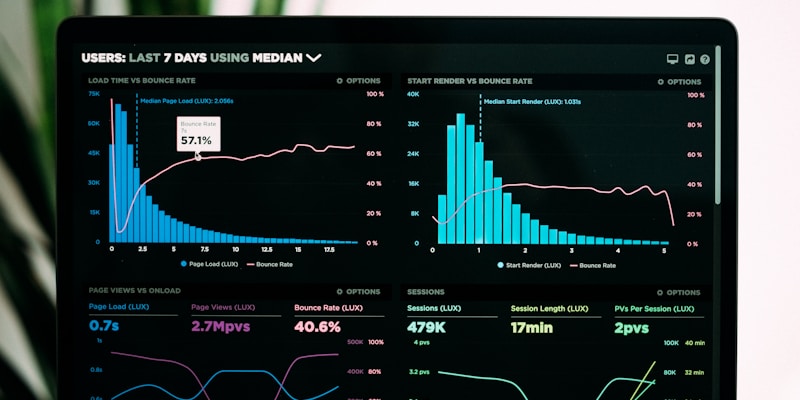Market Analysis: Understanding Real Estate Cycles and Trends
Successful real estate investing and decision-making requires a deep understanding of market cycles, trends, and the various factors that influence property values. Whether you're a buyer, seller, or investor, mastering market analysis can give you a significant advantage in timing your transactions and making informed decisions.
The Real Estate Market Cycle
Four Phases of the Cycle
1. Recovery Phase
Characteristics: Low construction, declining vacancy rates, stable rentsDuration: 1-3 years typicallyInvestor strategy: Buy and hold for long-term appreciationMarket indicators: Employment growth, population increase2. Expansion Phase
Characteristics: Rising rents, increased construction, economic growthDuration: 3-5 years typicallyInvestor strategy: Development and value-add projectsMarket indicators: Rising property values, increased lending3. Hyper Supply Phase
Characteristics: Peak construction, slowing rent growth, market overheatingDuration: 1-2 years typicallyInvestor strategy: Prepare for market correction, selective buyingMarket indicators: Overbuilding, speculative activity4. Recession Phase
Characteristics: Declining rents, high vacancy, reduced constructionDuration: 1-3 years typicallyInvestor strategy: Cash preservation, opportunistic purchasesMarket indicators: Job losses, foreclosures, distressed salesKey Market Indicators
Economic Indicators
Employment Rates: Job growth drives housing demandPopulation Growth: More people = more housing needsIncome Levels: Higher incomes support higher property valuesInterest Rates: Lower rates increase buying powerReal Estate Specific Metrics
Inventory Levels: Months of supply availablePrice-to-Rent Ratios: Indicator of market affordabilityConstruction Permits: Future supply pipelineAbsorption Rates: How quickly new units are occupiedLeading vs. Lagging Indicators
Leading Indicators (Predict Future Changes)
Building permitsEmployment dataInterest rate changesGovernment policy changesLagging Indicators (Confirm Past Changes)
Home pricesRental ratesForeclosure ratesConstruction completionsAnalyzing Local Markets
Micro vs. Macro Analysis
Macro Analysis (Regional/National)
Economic conditionsGovernment policiesInterest rate environmentNational demographic trendsMicro Analysis (Local/Neighborhood)
Local employment centersSchool district qualityTransportation infrastructureNeighborhood amenitiesNeighborhood Analysis Framework
Location Factors
Proximity to employment centersTransportation accessShopping and entertainmentParks and recreationQuality of Life Indicators
School ratingsCrime statisticsEnvironmental factorsCommunity engagementDevelopment Trends
Planned infrastructure projectsZoning changesNew business developmentsGentrification patternsData Sources and Tools
Government Sources
Census Bureau: Demographics and housing dataBureau of Labor Statistics: Employment and economic dataFederal Reserve: Interest rates and monetary policyLocal Planning Departments: Zoning and development dataIndustry Sources
Multiple Listing Service (MLS): Sales and listing dataCommercial Real Estate Platforms: Investment property dataReal Estate Research Firms: Market reports and analysisProperty Management Companies: Rental market dataTechnology Tools
Real Estate Analytics Platforms: Automated market analysisGIS Mapping Software: Spatial analysis capabilitiesFinancial Modeling Tools: Investment analysis softwareMarket Research Databases: Comprehensive data accessSeasonal Patterns and Timing
Seasonal Market Trends
Spring Market (March-May)
Highest activity levelsInventory increasesPrice competition peaksBest time for sellersSummer Market (June-August)
Sustained high activityFamily relocationsVacation home purchasesContinued seller advantageFall Market (September-November)
Activity begins to slowPrice negotiations increaseSerious buyers remainBalanced market conditionsWinter Market (December-February)
Lowest activity levelsLimited inventoryMotivated buyers and sellersBest deals availableMarket Timing Strategies
For Buyers
Late fall/winter for best pricesSpring for largest selectionMonitor interest rate trendsWatch for market cycle transitionsFor Sellers
Spring/early summer for highest pricesAvoid holiday periodsConsider local market conditionsTime major improvements strategicallyEmerging Market Trends
Demographic Shifts
Millennial Home Buying: Largest generation entering peak buying yearsRemote Work Impact: Geographic flexibility changing preferencesAging Population: Senior housing and accessibility needsUrban to Suburban Migration: Pandemic-driven trend changesTechnology Disruption
Virtual Tours and Remote Sales: Changing buying processesAI-Powered Valuations: More accurate and timely assessmentsBlockchain Transactions: Streamlined closing processesPropTech Solutions: Enhanced property management and analysisSustainability Focus
Energy Efficiency: Growing importance in property valuesClimate Resilience: Risk assessment and mitigationGreen Building Standards: LEED and similar certificationsSustainable Transportation: Walkability and public transit accessRisk Assessment and Mitigation
Market Risks
Cyclical Downturns: Economic recession impactsInterest Rate Fluctuations: Borrowing cost changesOversupply Conditions: Too much new constructionRegulatory Changes: Zoning and tax policy shiftsLocation-Specific Risks
Natural Disasters: Flood, earthquake, hurricane zonesEnvironmental Issues: Contamination and cleanup costsInfrastructure Decay: Aging utilities and transportationEconomic Dependence: Single-industry marketsMitigation Strategies
Diversification: Multiple markets and property typesConservative Leverage: Lower loan-to-value ratiosInsurance Coverage: Comprehensive risk protectionReserve Funds: Liquidity for unexpected eventsCreating Market Reports
Essential Components
Executive Summary: Key findings and recommendationsMarket Overview: Current conditions and trendsComparative Analysis: Historical and peer market dataFuture Outlook: Projections and scenariosPresentation Tips
Use clear visualizationsInclude relevant benchmarksProvide actionable insightsUpdate regularly for accuracyConclusion
Market analysis is both an art and a science, requiring the ability to synthesize quantitative data with qualitative insights. Successful real estate professionals develop systematic approaches to market analysis while remaining flexible enough to adapt to changing conditions.
The key to effective market analysis lies in understanding the interconnected nature of economic, demographic, and real estate factors. By monitoring leading indicators, understanding local dynamics, and recognizing cyclical patterns, you can make more informed decisions and better time your real estate transactions.
Remember that markets are dynamic and constantly evolving. Continuous learning, regular data review, and staying connected to local market participants will help you maintain an edge in understanding and anticipating market changes.
Whether you're buying your first home, building an investment portfolio, or working as a real estate professional, mastering market analysis skills will serve you well throughout your real estate journey.

